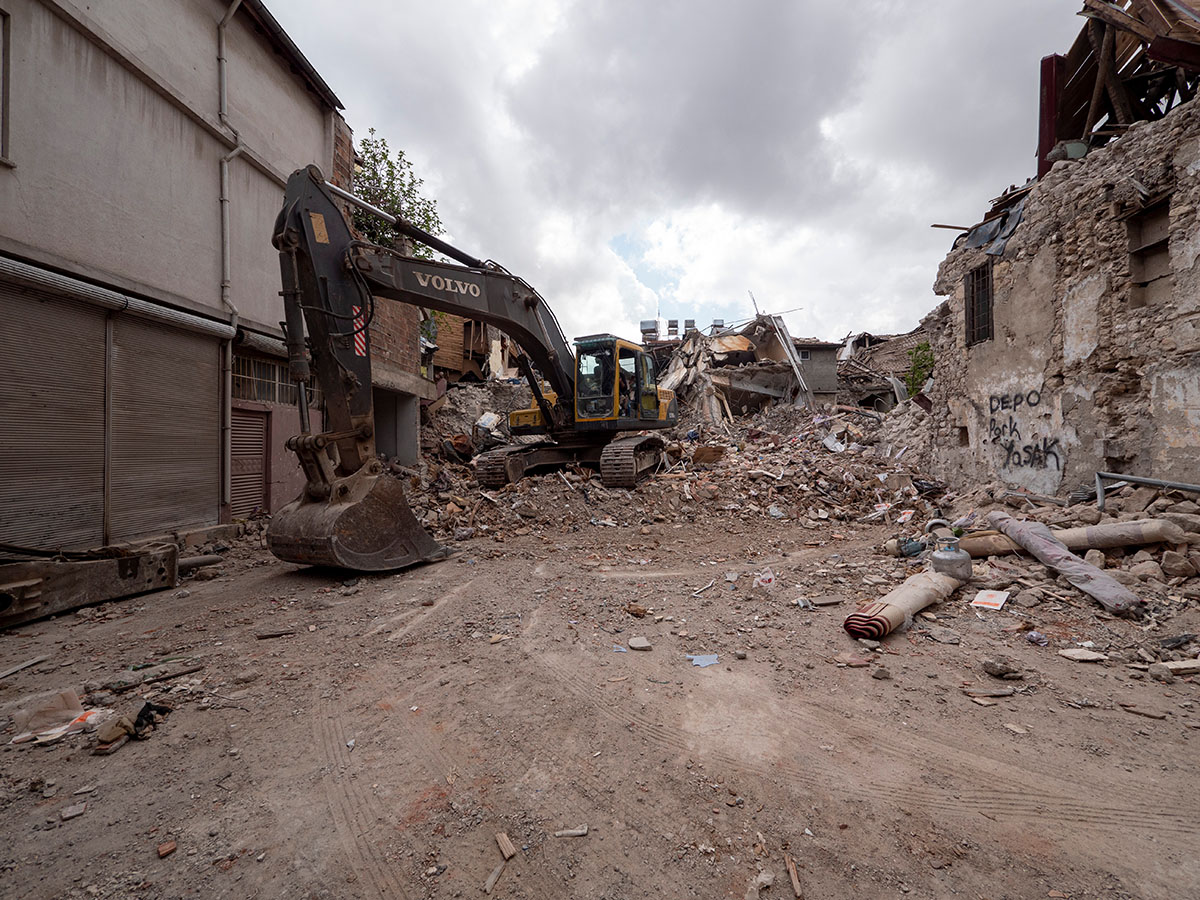What is Asbestos?
Asbestos is a group of minerals made of tiny fibers. These fibers are strong and heat-resistant, which is why they were used in many buildings and products. However, asbestos can be very dangerous when the fibers break apart and become airborne. When people breathe in these fibers, it can lead to serious health problems.
Health Risks Associated with Asbestos
Exposure to asbestos can cause several health issues, including:
- Asbestosis: A lung disease that makes it hard to breathe.
- Lung Cancer: A serious illness that can develop after long-term exposure.
- Mesothelioma: A rare cancer that affects the lining of the lungs and abdomen.
Common Uses of Asbestos in Construction
Asbestos was often used in construction for its durability and fire resistance. Some common uses include:
- Insulation materials for pipes and boilers.
- Floor tiles and ceiling tiles.
- Roofing materials and shingles.
Understanding the dangers of asbestos is crucial, especially for those living in older military housing where it may still be present.
Historical Use of Asbestos in Military Housing
Why Asbestos Was Used in Military Housing
Asbestos was commonly used in military housing for several reasons:
- Fire Resistance: Asbestos is known for its ability to withstand high temperatures, making it a popular choice for fireproofing materials.
- Durability: The material is strong and can last a long time, which was important for buildings meant to house military personnel.
- Cost-Effectiveness: Asbestos was relatively cheap to produce and use, making it an attractive option during times of budget constraints.
Types of Military Housing Containing Asbestos
Various types of military housing were built using asbestos, including:
- Barracks: Many barracks constructed in the mid-20th century contained asbestos in insulation and flooring.
- Officers’ Quarters: Higher-ranking officers often lived in homes that also used asbestos materials.
- Training Facilities: Buildings used for training exercises frequently included asbestos in their construction.
Timeline of Asbestos Use in Military Buildings
The use of asbestos in military housing can be traced through several key periods:
- Early 1900s: Asbestos began to be used widely in construction, including military buildings.
- World War II: The demand for durable and fire-resistant materials increased, leading to more asbestos use.
- 1970s: Awareness of the health risks associated with asbestos exposure began to grow, leading to regulations and a decline in its use.
Identifying Asbestos in Military Housing
Signs of Asbestos in Older Buildings
Identifying asbestos in military housing can be crucial for health and safety. Here are some signs to look for:
- Age of the Building: Homes built before the 1980s are more likely to contain asbestos.
- Material Type: Look for insulation, floor tiles, or ceiling tiles that may be made from asbestos.
- Condition of Materials: Damaged or crumbling materials can release asbestos fibers into the air.
Professional Asbestos Inspection
If there are concerns about asbestos, hiring a professional is a wise choice. Here’s what to expect:
- Visual Assessment: Inspectors will examine the property for signs of asbestos.
- Sampling: They may take samples of materials for lab testing.
- Report: A detailed report will outline the findings and recommend next steps.
DIY Asbestos Testing Kits
For those who want to check for asbestos themselves, DIY kits are available. Here’s how to use them:
- Purchase a Kit: Buy a reliable asbestos testing kit from a store or online.
- Follow Instructions: Carefully follow the instructions to collect samples.
- Send for Testing: Mail the samples to a lab for analysis and wait for the results.
Health Impacts of Asbestos Exposure on Veterans
Short-Term Health Effects
Veterans exposed to asbestos may experience immediate health issues, which can include:
- Coughing: A persistent cough that doesn’t go away.
- Shortness of Breath: Difficulty breathing, especially during physical activity.
- Chest Pain: Discomfort or pain in the chest area.
These symptoms can be alarming and may require medical attention.
Long-Term Health Consequences
The long-term effects of asbestos exposure can be severe and include:
- Asbestosis: A serious lung disease caused by inhaling asbestos fibers, leading to scarring of lung tissue.
- Lung Cancer: Increased risk of developing cancer in the lungs, especially for those who smoke.
- Mesothelioma: A rare but aggressive cancer that affects the lining of the lungs and abdomen, directly linked to asbestos exposure.
These conditions can significantly impact a veteran’s quality of life.
Veterans Most at Risk
Certain groups of veterans are more vulnerable to asbestos-related health issues, including:
- Those who served on Navy ships: Many ships used asbestos for insulation and fireproofing.
- Veterans in construction roles: Those who worked in building or repairing military facilities.
- Individuals exposed during training: Veterans who trained in older facilities that contained asbestos.
Understanding these risks is crucial for early detection and treatment.
Legal Rights of Veterans Exposed to Asbestos
Understanding Veterans’ Legal Rights
Veterans who have been exposed to asbestos have specific legal rights. These rights help them seek justice and compensation for their suffering. Key points include:
- Right to Compensation: Veterans can file claims for financial help due to health issues caused by asbestos.
- Access to Legal Support: Many organizations offer free legal advice to veterans.
- Protection from Retaliation: Veterans should not face negative consequences for seeking help regarding asbestos exposure.
Filing a Claim for Asbestos Exposure
When veterans decide to file a claim, they should follow these steps:
- Gather Evidence: Collect medical records and documents showing asbestos exposure.
- Consult a Lawyer: Find a lawyer who specializes in asbestos cases to guide the process.
- Submit the Claim: File the claim with the appropriate agency or court.
Compensation Available for Affected Veterans
Veterans may be eligible for various types of compensation, including:
- Medical Expenses: Coverage for treatments related to asbestos-related diseases.
- Disability Benefits: Monthly payments for veterans unable to work due to their health issues.
- Settlement Payments: One-time payments from companies responsible for asbestos exposure.
Steps to Take if You Suspect Asbestos Exposure
Immediate Actions to Protect Health
If someone thinks they might have been around asbestos, it’s important to act quickly. Here are some steps to follow:
- Stay Calm: Don’t panic. Asbestos is dangerous, but knowing what to do can help.
- Avoid Disturbing the Area: If you suspect asbestos is present, do not touch or disturb it. This can release harmful fibers into the air.
- Leave the Area: If you are in a place where you think there is asbestos, leave the area immediately to reduce exposure.
Contacting a Professional for Asbestos Removal
Getting help from experts is crucial. Here’s how to proceed:
- Find a Licensed Asbestos Inspector: Look for professionals who are trained to handle asbestos safely.
- Schedule an Inspection: Have the inspector check your home or building for asbestos. They will know where to look and how to test for it.
- Follow Their Advice: If asbestos is found, follow the recommendations for removal or management.
Legal Steps to Take After Exposure
If someone believes they have been exposed to asbestos, they should consider these legal steps:
- Document Everything: Keep records of where and when the exposure happened, along with any symptoms experienced.
- Consult a Lawyer: Speak with a lawyer who specializes in asbestos cases to understand your rights.
- File a Claim: If necessary, file a claim for compensation related to the exposure. This can help cover medical costs and other expenses.
Resources for Veterans Affected by Asbestos Exposure
Veterans Affairs (VA) Resources
Veterans can access various resources through the VA to help with asbestos-related issues. These include:
- Health Care Services: The VA provides medical care for veterans suffering from asbestos-related diseases.
- Disability Benefits: Veterans may qualify for disability compensation if they have health problems linked to asbestos exposure.
- Counseling Services: The VA offers mental health support for veterans dealing with the stress of health issues related to asbestos.
Support Groups and Organizations
There are several organizations that support veterans affected by asbestos exposure. These groups can provide information, resources, and a sense of community:
- Veterans of Foreign Wars (VFW): This organization helps veterans navigate their benefits and offers support for health issues.
- American Legion: They provide resources and advocacy for veterans facing asbestos-related health challenges.
- Asbestos Disease Awareness Organization (ADAO): ADAO raises awareness about asbestos dangers and offers support for affected individuals.
Medical Assistance for Asbestos-Related Conditions
Veterans can find medical help specifically for conditions caused by asbestos exposure. Options include:
- Specialized Clinics: Some clinics focus on treating asbestos-related diseases, providing expert care.
- Research Programs: Veterans can participate in studies that aim to improve treatment for asbestos-related health issues.
- Financial Aid for Treatment: Various programs may help cover the costs of medical care for veterans suffering from these conditions.
Preventing Asbestos Exposure in Current Military Housing
Modern Building Standards and Regulations
To ensure the safety of military housing, modern building standards have been put in place. These include:
- Strict guidelines that limit the use of asbestos in new constructions.
- Regular inspections to check for any hazardous materials in existing buildings.
- Training programs for construction workers to recognize and handle asbestos safely.
Asbestos Abatement Procedures
When asbestos is found in military housing, specific steps are taken to remove it safely:
- Containment: The area is sealed off to prevent asbestos fibers from spreading.
- Removal: Trained professionals carefully take out the asbestos materials.
- Disposal: The removed asbestos is disposed of in a safe and legal manner.
Role of Military Leadership in Ensuring Safety
Military leaders play a crucial role in protecting service members and their families from asbestos exposure. Their responsibilities include:
- Promoting awareness about the dangers of asbestos.
- Implementing safety protocols to minimize risks in housing.
- Supporting training for personnel on how to deal with potential asbestos hazards.
Case Studies of Asbestos Exposure in Military Housing
Notable Cases of Asbestos Exposure
- Camp Lejeune, North Carolina: This military base has been linked to serious health issues due to asbestos in its buildings. Many veterans and their families have reported illnesses related to exposure.
- Fort McClellan, Alabama: Asbestos was found in various structures, leading to numerous claims from veterans who lived there. The base has been a focal point for legal actions regarding asbestos exposure.
- Naval Base San Diego, California: This base had significant asbestos use in its construction. Veterans who served there have raised concerns about long-term health effects.
Lessons Learned from Past Incidents
- Importance of Awareness: Understanding the risks of asbestos can help prevent future exposure.
- Need for Regular Inspections: Regular checks of older military buildings can identify asbestos before it becomes a health risk.
- Advocacy for Veterans: Increased support and resources for veterans affected by asbestos exposure are crucial for their health and legal rights.
Impact on Policy and Regulations
- Stricter Regulations: Past cases have led to tighter rules on asbestos use in military housing.
- Increased Funding for Remediation: More money is being allocated to remove asbestos from older buildings.
- Veteran Support Programs: New programs have been created to help veterans who have been exposed to asbestos, ensuring they receive the care they need.
The Role of Advocacy Groups in Supporting Affected Veterans
Major Advocacy Groups for Veterans
Advocacy groups play a crucial role in helping veterans who have been exposed to asbestos. Some of the key organizations include:
- Veterans of Foreign Wars (VFW): This group provides support and resources for veterans, including those affected by asbestos.
- American Legion: They advocate for veterans’ rights and offer assistance in navigating legal claims.
- Asbestos Disease Awareness Organization (ADAO): Focused on raising awareness about asbestos-related diseases, they also support veterans in their fight for justice.
How Advocacy Groups Assist Veterans
These organizations offer various forms of help, such as:
- Legal Guidance: They help veterans understand their rights and the process for filing claims related to asbestos exposure.
- Emotional Support: Many groups provide counseling and support networks for veterans dealing with health issues.
- Educational Resources: They offer information on the dangers of asbestos and how to seek medical help.
Success Stories from Advocacy Efforts
Advocacy groups have made a significant impact, with many veterans successfully receiving:
- Compensation for Medical Expenses: Veterans have been able to cover their treatment costs through claims.
- Increased Awareness: Their efforts have led to better understanding and recognition of asbestos-related health risks.
- Policy Changes: Advocacy has influenced laws and regulations to protect current and future military personnel from asbestos exposure.
Government Policies on Asbestos in Military Housing
Current Government Regulations
The government has put in place several rules to manage asbestos in military housing. These regulations aim to protect service members and their families from the dangers of asbestos exposure. Key points include:
- Asbestos Management Plans: Military installations must have plans to identify and manage asbestos.
- Regular Inspections: Buildings are regularly checked for asbestos to ensure safety.
- Training for Personnel: Staff members receive training on how to handle asbestos safely.
Historical Policy Changes
Over the years, policies regarding asbestos have changed significantly. Some important changes include:
- Ban on New Uses: In the late 1970s, the use of asbestos in new construction was largely banned.
- Increased Awareness: As more information about asbestos dangers became available, regulations became stricter.
- Support for Veterans: New laws have been introduced to help veterans who were exposed to asbestos while serving.
Future Directions in Asbestos Regulation
Looking ahead, the government is focusing on improving safety measures. Future directions may include:
- Stricter Enforcement: Ensuring that existing regulations are followed more closely.
- Research and Development: Investing in new technologies to safely remove asbestos.
- Public Awareness Campaigns: Educating military families about the risks of asbestos and how to stay safe.



